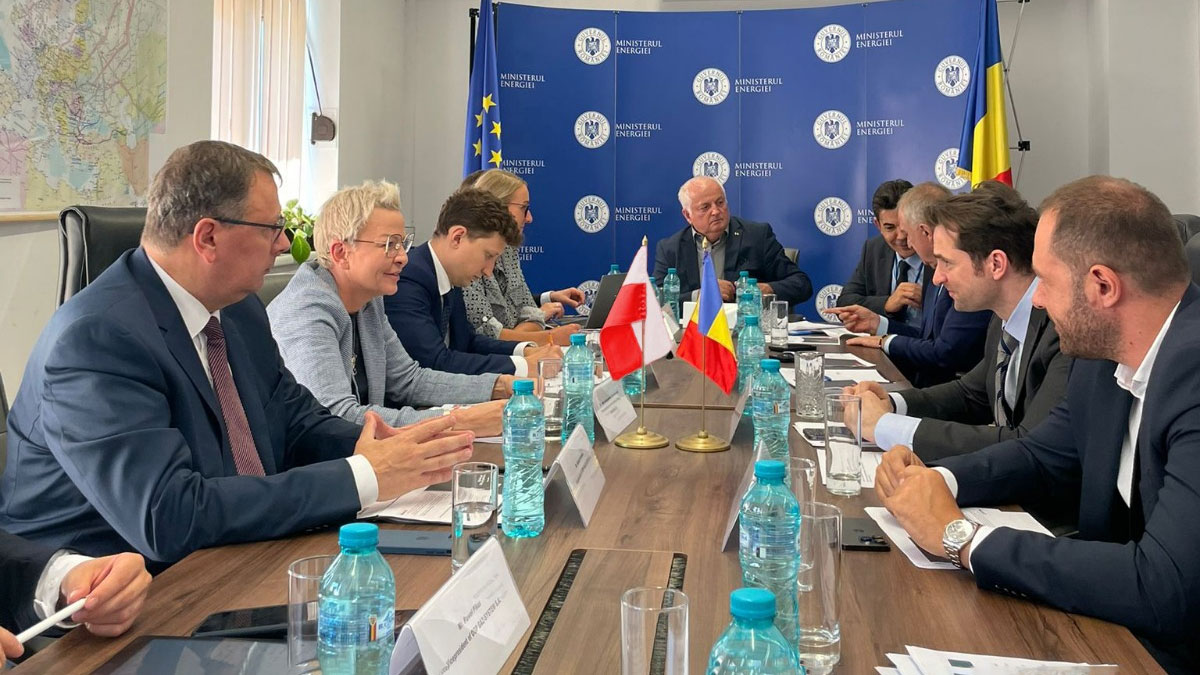Romanian-Polish Cooperation on Gas Storage and Development of Interconnections at European level
Romanian Energy Minister Sebastian-Ioan Burduja and Anna Łukaszewska-Trzeciakowska, Secretary of State, Plenipotentiary Government Representative for Strategic Energy Infrastructure, Prime Minister’s Office of the Republic of Poland, had a meeting on August 8. The meeting was attended by a delegation from OGP Gaz-System, as well as the general managers of Transgaz and Romgaz, Ion Sterian and Razvan Popescu.
During the talks, Anna Łukaszewska-Trzeciakowska mentioned the interest in continuing the cooperation between the two countries in the field of energy.
Sebastian-Ioan Burduja underlined the existence of a real potential for cooperation in the field of energy from the perspective of commitments at European level, highlighting Romania’s balanced energy mix.
Discussions also covered multiple topics of interest at governmental level, such as: increasing gas storage capacities and developing interconnections at European level, i.e., the Baltic countries.
OGP Gaz-System Vice President Andrzej Kensbok presented the project of common interest at EU level on the Liquefied Natural Gas Terminal – Floating Storage Regasification Unit in Gdańsk, with a view to ensuring security of gas supply at EU level.
The General Manager of Transgaz, Ion Sterian, mentioned the need to implement the provisions of the Memorandum of Understanding on hydrogen, signed in 2022.
As a reminder, four natural gas Transmission System Operators (TSOs) in Central Europe (Transgaz Romania, Gaz-System Poland, Eustream Slovakia and FGSZ Hungary) have signed a strategic partnership to explore possibilities to decarbonise their operations, transport green gases and investigate the potential of CO2 transport.
The cooperation between the four parties, Hungarian, Slovak, Polish and Romanian, aims to initiate joint activities in several areas. First of all, it aims at sharing the best practices in the field of hydrogen and CO2 transport, decarbonization of operations and hydrogen production; secondly, identifying the markets and applications for hydrogen in various industries; and, in the end, preparing a relevant regulatory framework.
To expand the scope of cooperation, the initiative is also open for other regional TSOs. The Memorandum of Understanding largely supports all initiatives that encourage the development of the hydrogen value chain in the CEE region and draws attention to the regional characteristics for a uniform evolution of the hydrogen network in the European Union.



